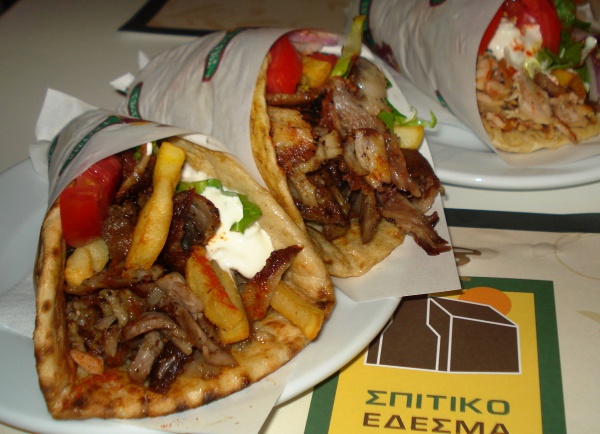Facts About Gyro
A gyro (or gyros) is a delectable Greek dish that traces its origins to the lamb-based doner kebab. This dish is crafted by cooking meat on a vertical rotisserie and is typically served wrapped or stuffed in a pita, accompanied by ingredients such as tomato, onion, and tzatziki sauce. Although the traditional Greek version employs pork or chicken, variations featuring beef, chicken, and lamb are common in other countries.
The history of gyros dates back to the 19th century in the Ottoman Empire, particularly in Bursa, where the technique of grilling stacked meat slices on a vertical spit, known as doner kebab, was invented. After World War II, this cooking method reached Athens. The Greeks added their unique touch by using pork and tzatziki sauce, and this version became known as gyros. The mass production of gyros meat cones began in the early 1970s in the United States, with Gyros Inc. pioneering assembly line production.
The word "gyro" is derived from the Greek word "γύρος" (gyros), meaning "circle" or "turn" which is analogous to the Turkish word "döner." Originally called "ντονέρ" in Greece, the term was changed to "gyro" or "gyros" due to criticism of its Turkish origin. In Athens, the skewered meat dish known as souvlaki is referred to as kalamaki, whereas souvlaki serves as a general term for gyros, kalamaki, and similar dishes.
Regarding preparation, gyros in Greece are usually made with pork, though chicken, lamb, or beef can also be used. In the U.S., mass-produced gyros often consist of a blend of finely ground beef and lamb. The meat is thinly sliced, stacked on a spit, seasoned, and cooked on a vertical rotisserie. Once cooked, the meat is sliced thin and served in a pita with toppings like tomatoes, onions, lettuce, and tzatziki sauce.

 Bulgaria
Bulgaria